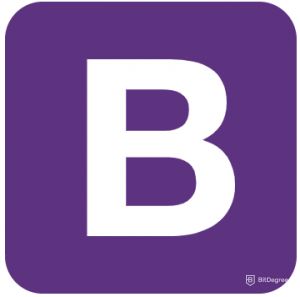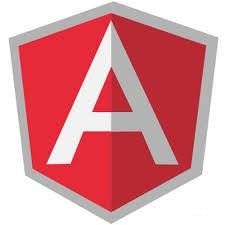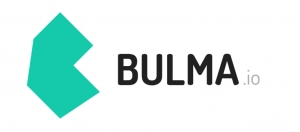Ace quick missions & earn crypto rewards while gaining real-world Web3 skills. Participate Now! 🔥
In the word of programming, all operations can be grouped to front end and back end. The former deals with the client side of a website or an application, and the latter represents the server side. The main concerns of a front end developer include user interface (UI), responsive web design, accessibility and compatibility. All of those are not simple to manage – especially for a beginner.
Luckily, there's a bunch of front end frameworks nowadays to help you out! In this detailed guide, we will introduce you to the most popular front end frameworks out there. Having all the info will definitely help you make the right choice.
Table of Contents
Bootstrap: the industry giant
 Boostrap has been sitting proudly among the most popular front end frameworks even since it was initially introduced in 2011. As of November 2023, one in five websites uses it, including those of giants like Netflix and CNN. However, it all started with a different name. Striving for consistency among the tools used internally in Twitter, Mark Otto and Jacob Thornton came up with what they called Twitter Blueprint.
Boostrap has been sitting proudly among the most popular front end frameworks even since it was initially introduced in 2011. As of November 2023, one in five websites uses it, including those of giants like Netflix and CNN. However, it all started with a different name. Striving for consistency among the tools used internally in Twitter, Mark Otto and Jacob Thornton came up with what they called Twitter Blueprint.
Take advantage of this special Udacity coupon code & access selected Udacity courses for free! Learn new skills & develop your career at zero cost.
Bootstrap 4 is the most current version, finalized in 2018. You can download it free of charge from the official website. Bootstrap runs on the web platform and supports the latest versions of all major browsers, including the default browsers on mobile devices. The framework is fully open source, and great documentation helps smooth the learning curve. If you want a heads up on how to use Bootstrap, try an introductory online course on BitDegree.
Bootstrap prioritizes responsible web design, simplifying it with a powerful grid system and utility classes. In addition to that, it offers a variety of pre-styled components that consist of HTML, CSS, and, in some cases, JavaScript. The framework also has some optional JavaScript plugins based on jQuery. However, Bootstrap does not support any JavaScript libraries coming from third parties, and the team has publicly declared their plans to get rid of jQuery in Bootstrap 5.
React: the top JS choice
React is currently the number one among all front end JavaScript frameworks. Just like Bootstrap, it is a web platform framework that started as an internal project for a social media company. In 2011, the developers at Facebook grew tired of some applications growing increasingly hard to handle. Hence, they created themselves a framework to be able to work more efficiently. This was the early prototype of React.
 As of the fall of 2023, the newest version of React is v.16.11, and Facebook is not the only web giant using it. The client list currently also contains AirBnB, PayPal, and other famous companies. In 2015, the team also released React Native for mobile development (Android and iOS).
As of the fall of 2023, the newest version of React is v.16.11, and Facebook is not the only web giant using it. The client list currently also contains AirBnB, PayPal, and other famous companies. In 2015, the team also released React Native for mobile development (Android and iOS).
React deals with the virtual DOM and is especially quick with performing updates. It relies of JavaScript and consists of reusable components. While it's rather common for a beginner to confuse them for elements, these are two different things: in their essence, elements are immutable objects. Components, on the other hand, are sections of pre-written code that stand for either classes or functions. You can customize them with your personal input by using props. To grasp the concept quicker, feel free to sign up for a BitDegree online course.
Vue.js: the lightweight warrior
Another popular choice among the front end frameworks is Vue.js. According to Snyk, it was downloaded over forty million times last year, which means it can certainly keep up with its rivals. Released in 2014, it is also younger than most of them, which means the team was aware of some issues other JS frameworks face and made sure they avoid them.
 As a result, Vue.js is extremely lightweight – the downloadable files only take up around twenty kilobytes. Because of that, the system is incredibly fast and flexible. It's also less restrictive, simple to learn and extend using various libraries and tools. All this makes it one of the best UI frameworks for a beginner. In the survey performed by Monterail, almost sixty percent of Vue.js users mentioned ease of use as the main reason of their choice. According to the Vue.js team, you only need to know the basics of HTML and JavaScript to be ready to take your first steps. The framework supports Babel and Typescript, as well as plain JavaScript. There's also extensive documentation to guide you, which 75 percent of Monterail survey participants found useful. In addition to that, compared to other front end frameworks, this one has a rather small area of API surface, which simplifies navigation.
As a result, Vue.js is extremely lightweight – the downloadable files only take up around twenty kilobytes. Because of that, the system is incredibly fast and flexible. It's also less restrictive, simple to learn and extend using various libraries and tools. All this makes it one of the best UI frameworks for a beginner. In the survey performed by Monterail, almost sixty percent of Vue.js users mentioned ease of use as the main reason of their choice. According to the Vue.js team, you only need to know the basics of HTML and JavaScript to be ready to take your first steps. The framework supports Babel and Typescript, as well as plain JavaScript. There's also extensive documentation to guide you, which 75 percent of Monterail survey participants found useful. In addition to that, compared to other front end frameworks, this one has a rather small area of API surface, which simplifies navigation.
However, being the new kid on the block has its challenges as well. Compared to the the most popular front end frameworks, Vue.js has a much smaller community of developers. Being the official choice of famous companies, industry veterans have the advantage of a more reliable public image as well.
Angular: well-supported and inovative
 Initially released in 2009, this framework was called AngularJS. However, now this name represents only the releases prior to version 2.0 – all the newer ones are simply called Angular. Why? Because the system rewrite was just too major for the users to be able to simply migrate from one version to the other. Unlike Angular JS, which used plain JavaScript, Angular uses its subset called TypeScript which allows static checking. In addition to that, AngularJS was merely turning HTML to dynamic content. Angular, on the other hand, is much better suited for the modern web and works across multiple platforms, including mobile.
Initially released in 2009, this framework was called AngularJS. However, now this name represents only the releases prior to version 2.0 – all the newer ones are simply called Angular. Why? Because the system rewrite was just too major for the users to be able to simply migrate from one version to the other. Unlike Angular JS, which used plain JavaScript, Angular uses its subset called TypeScript which allows static checking. In addition to that, AngularJS was merely turning HTML to dynamic content. Angular, on the other hand, is much better suited for the modern web and works across multiple platforms, including mobile.
What makes Angular stand out among the other front end frameworks is its origins. Angular was created by Google engineers, and support of the industry giant always makes a system seem more reliable. You can be sure experienced professionals are responsible for all the updates, support, and further development.
Currently, Angular 8.0 is the newest version, but talks about the 9.0 release have already begun. The community is especially excited to see the Ivy renderer available for all Angular applications. Ivy is admired for simplified debugging and impressively shrinking the size on bundles, which is crucial for mobile development.
Bulma: the CSS youngster

When discussing front end frameworks, we cannot skip Bulma. According to the official website, it gets more than 600 thousand downloads monthly, and has over 37 thousand stars on GitHub. What makes it unique? First of all, it is the newest out of the bunch: the team of Bulma first released it in 2016. The latest version is 0.8.0, which introduces some color updates, bigger form controls, and color customization for the panel element.
Second, it consists of CSS classes only, so you don't need any JavaScript knowledge to roll up your sleeves and get to it. Bulma contains over thirty SASS (Syntactically Awesome Style Sheets) files, which can also be imported individually if you don't need to use all the available features. What you also get is 100+ helper classes that simplify the development even further. Just like Bootstrap, Bulma takes a mobile-first approach and prioritizes responsiveness in web design. It also optimizes vertical reading by stacking the columns at the mobile breakpoint, as well as hiding the navigation menu.
Just like all the front end frameworks, Bulma runs on the web platform and supports the newest releases of all modern browsers. However, there is one catch: it does fall short on Internet Explorer (including the latest versions).

Did you know?
Have you ever wondered which online learning platforms are the best for your career?
So, what's the best UI framework?
Each of the front end frameworks we discussed have their own pros and cons. Going with the most popular option can mean a great and helpful user community, but rob your website of a truly unique look. For someone who knows the basics of CSS, a no-JavaScript choice might seem the most attractive – but won't you miss extra opportunities later? The point is, everything depends on your personal needs.
All of these front end frameworks are free to download and use. Try a few before you make your choice! Better yet – master more than one. Indecision can be the key to flexibility, after all – and the more flexible you are as a developer, the better.












